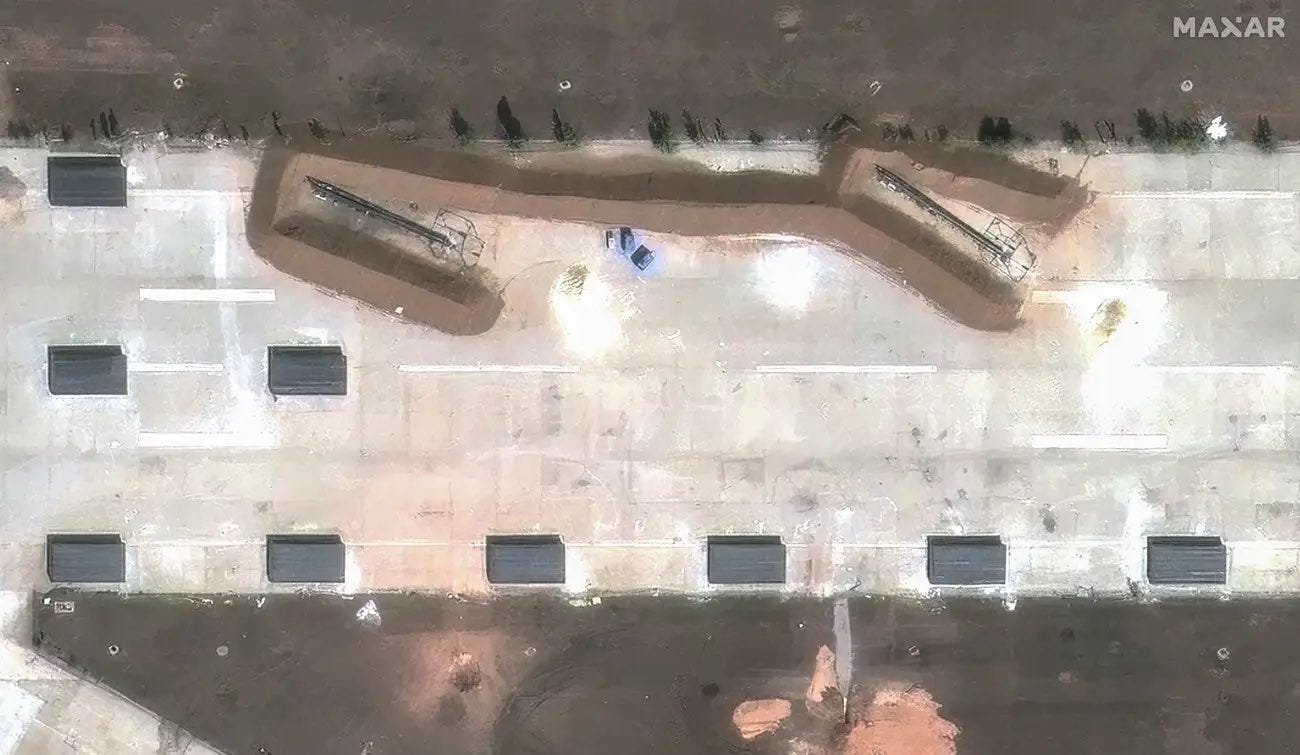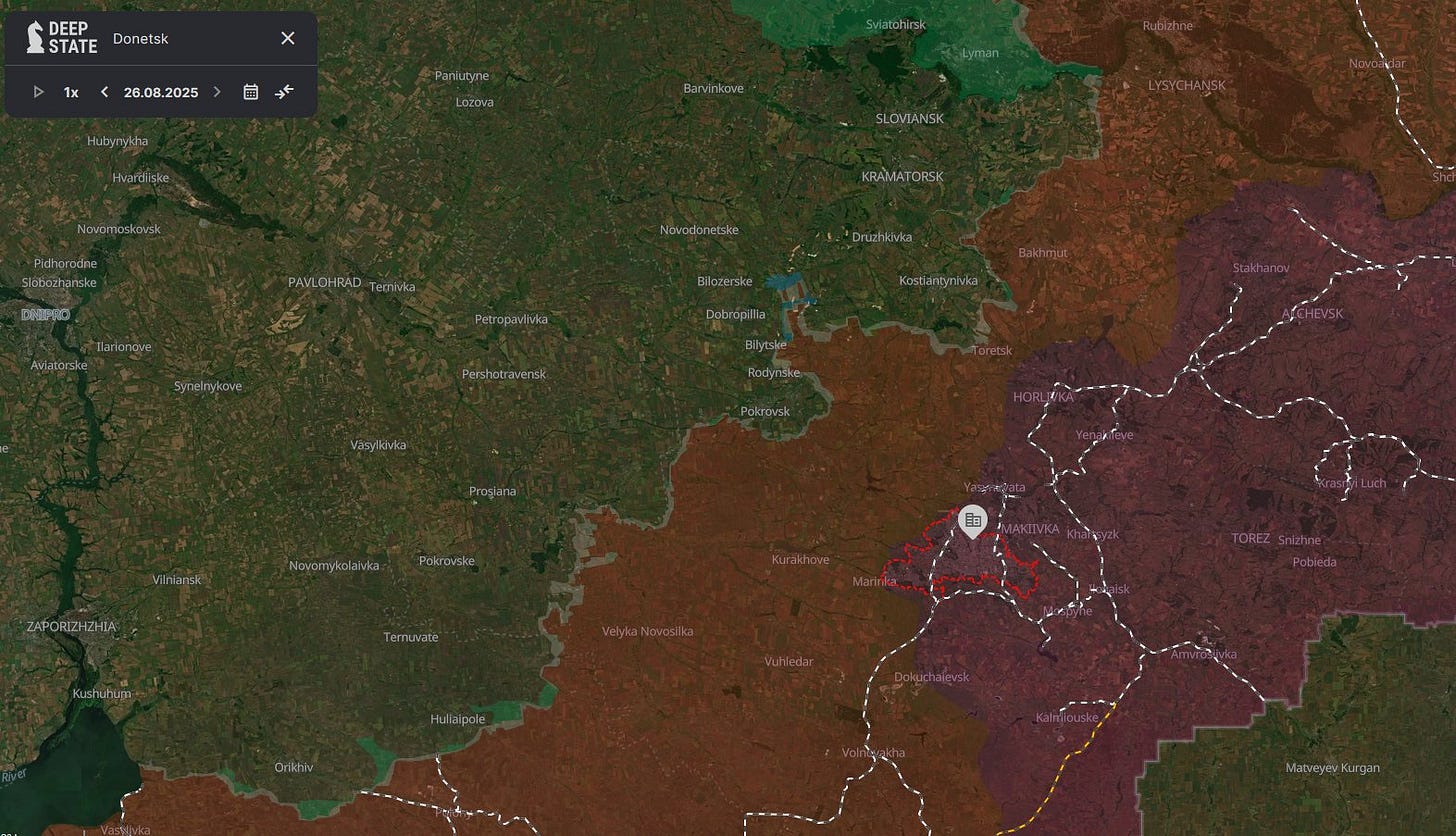Russia Adapts Shahed-136 Into Battlefield Strike Munition, Loitering Strike Drone
🇷🇺 🇺🇦
Note: The following text was originally posted on my X/Twitter account.
The establishment of a Shahed-136/Geran-2/Garpiya launch position at Donetsk airport is likely intended to support the expanded use of these propeller-driven fixed-wing strike drones against battlefield targets located some ~50 or so kilometers from the frontlines. Russia is heavily concentrating its capabilities to break through Ukraine's defensive lines in Donetsk and has recently been regularly employing Shahed-136/Geran-2/Garpiya strike drones for this purpose. While there is precedent for the use of the Shahed-136/Geran-2/Garpiya against targets that are fairly close to the frontlines, the observed dynamic in Donetsk and in other sectors—including Sumy—is likely driven by several factors. https://x.com/shahpas/status/1928276028130029672
These factors likely include: - The much greater availability of such strike drones as a result of sustained efforts to expand production capacity. There is now a production line at Alabuga, Tatarstan, for the Shahed-136/Geran-2 and a separate production line in Izhevsk, Udmurtia, for the related Garpiya. - The availability of the Shahed-136/Geran-2 in a reduced range configuration that is equipped with a heavier 90-kilogram—as opposed to a 50-kilogram—class warhead. The destructive potential of such a Shahed-136/Geran-2 can be compared in broad strokes to a medium-caliber artillery rocket such as the 227 mm GMLRS used with the American HIMARS and M270 MLRS launchers (the analogy focuses on warhead weight and does not necessarily extend to warhead design and fusing). - The availability of the Shahed-136/Geran-2/Garpiya in a version that is equipped with an airburst warhead. - The availability of the Shahed-136/Geran-2/Garpiya in a version that is equipped with an inexpensive and rudimentary camera + radio datalink that enables its employment as a loitering strike drone in a manner that is broadly analogous to the much smaller, lighter, and shorter-range Russian Lancet strike drone. Note that the Shahed-136/Geran-2/Garpiya strike drone can only be operated as a human-in-the-loop strike munition while it is within line-of-sight of a ground-based antenna (or aerial repeater/radio relay) in the absence of a beyond-line-of-sight satellite communications datalink. Following successful Russian offensives, Donetsk airport is now beyond the practical range of Ukrainian artillery. A Shahed-136/Geran-2/Garpiya launched from Donetsk airport can reach the frontlines in around 20 minutes and can cover an additional 50 or so kilometers in another 20 minutes. As a result, the Shahed-136/Geran-2/Garpiya can be effectively employed against both stationary/fixed and semi-mobile targets in a battlefield support role. This amounts to a very different concept of operations than what the Shahed-136's Iranian designers originally had in mind, and should be understood as Russia's adaptation of the Iranian strike drone design to meet Russian needs in the specific military-geographical context of the Russia-Ukraine War. The increasing use of the Shahed-136/Geran-2/Garpiya to attack targets close to the frontlines has analytical implications for those who track Russia's use of strike munitions of all types. I covered this issue at length in a recent thread: https://x.com/shahpas/status/1958562969127637027
Simply stated, Ukraine's regular disclosures on Russian strike munition launches are decidedly incomplete and increasingly misleading as technology and operational concepts have evolved over the course of the Russia-Ukraine War. The increasingly regular employment of Shahed-136/Geran-2/Garpiya strike drones against battlefield targets is just the latest manifestation of this dynamic.



